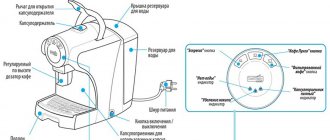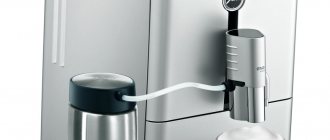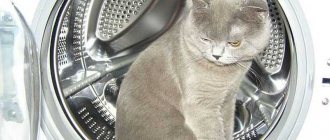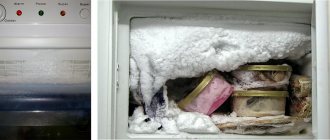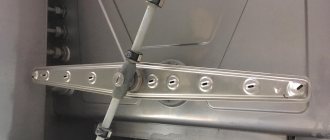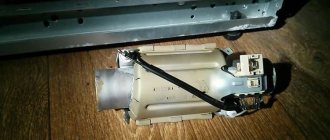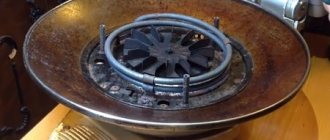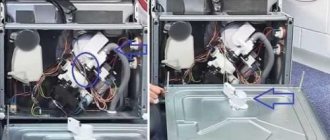What can break in a Krups coffee machine?
Repair of coffee makers under the official warranty is carried out free of charge. Only if the warranty card is lost or has expired, you will need to pay for the services of engineers to repair your coffee machine. Prices for Krups repairs or preventive services are indicated in the official price list, which is often available on the center’s website.
Equipment can be repaired using devices from Krups, and not third-party parts purchased on the market.
Repair of Krups capsule coffee machines is:
- any types of high-quality services for rescuing coffee machines (including repair of pumps, consumables, etc.),
- cleaning from scale and coffee oils with professional means,
- setting up the control panel, including touch,
- replacing devices with new ones in this case, if necessary.
Please note that replacement of filters, gaskets and other accessories is not possible under warranty because their service life is very limited. In any case, repairs of Krups coffee machines for Dolce Gusto capsules are carried out very quickly and at the highest professional level. The service is ready to take on repairs of Krups capsule coffee machines of any difficulty, including large-scale reconstruction of the thermoblock or automatic cappuccino making system.
What to do if water does not flow from Dolce Gusto?
For everyone who has used Nescafe Dolce Gusto and after a short time thinks that it is broken. They say the lever is TURNED AND THE COFFEE DOES NOT PREPARE, THE WATER DOES NOT FLOW, and so on.
This is not critical and is not at all difficult to solve, although of course the user will be to blame for this, because he himself has stepped on this rake more than once.
- The first thing you need to do is add water, place the coffee capsule together with the capsule receiver and lower the lever that breaks the capsule down. The horn that holds the capsule should not be there and you should see the needle itself for piercing the capsules.
- Then, place an empty glass and move the water supply lever to the right. At first, a narrow stream of water will blow, and after a few seconds steam will come out. As steam starts to flow, return the lever to the center position.
- In fact, what are all these simple manipulations for... when the coffee machine runs out of water, and you do not have time to top it up, then there is air in the heating element, blocking the upcoming continuation of the process of drawing water from the reservoir. As for the rest, the machine is virtually endless, I’ve already made thousands of cups at work and have had no problems. There is actually nothing to break there. Happy coffee drinking to everyone and I hope this review was helpful to someone.
Advice from Anton.
102 comments
Hello, can you help me please? In the afternoon I got ready to make cocoa, put the capsule in, almost a few drops spilled out and that’s it, no water came in and I couldn’t open the lid to get the capsule out. The annotation says that after 20 minutes the pressure drops it will open, but this is not my case? It stays there all day and does not open dolce gusto Krups 17110
Thanks for you experienced people! I was buzzing and the water was not flowing, I even started to find the newest one, later I decided to read the comments. I started doing all the manipulations described above, nothing helped, I cleaned the needle and found the spring, and lifted the top down, it didn’t help. Even when I tried to disassemble the back cover, I couldn’t find the screwdriver. Later I decided to do everything again with the machine turned on and clean the needle and raise and lower with sharp (very sharp movements, crazy) and lo and behold, at first steam came out and then water. Thanks again smart people
Pumped it up, raising it by 1 cm. Magic. Earned
Thank you all for the advice!) I’ll share my experience of my own repairs. Our machine was left with a capsule of milk by the family and when it was turned on, it buzzed and stopped showing signs of life (only the button blinked red and turned green). So, the needle turned out to be clean. I removed two tubes from the pump and blew into each one, pressing the valve lever in turn. It turned out that the cool water channel was clogged, I had to disassemble the hoses in the head (very tedious, but doable). Then I thought that the pump had failed, I removed it and checked it, it turned out to be clean, I applied 220 and everything works. Then I took a multimeter and it turned out that there was no power to the pump from the board. I did not go further to check the transistor. I started finding boards and was blown away by the prices)) I solved the problem by installing an additional button to power the pump. The machine is not completely automatic, but it works: with the power button off, turn on the hot channel, pump water without a capsule, close the channel, turn on the power, wait for the green light and insert the capsule, turn on the hot channel again and turn on the pump again. Coffee is ready)) P.s. For those who have clean channels, the needle and pump are humming, but the button is not glowing green, dig towards the thermistor and heating element.
Krups KP 1006 Dolce Gusto when you press the power button, the reddish indicator flashes once and nothing else happens. After disassembling the coffee machine, I blew out all the pipes and filled them with water through a syringe. Water is not pumped into the pump with a syringe, is that how it should be? I checked with a tester: the fuses are intact, the magnetic sensor is triggered, the thermal protection on the pump is working. No current passes through the control board, there are no external signs of a malfunction. Who knows, tell me how and what to inspect on the board? What could be the cause of the malfunction?
When turned on, the red light comes on first, then the green light, and then the red light starts flashing. The coffee maker generally does not give any symptoms of life. The needle is passable. Tell me what to do?
A similar situation: at first the reddish one lights up, later the greenish one blinks, and later the reddish one is actively glowing. And no life symptoms. Maybe someone knows what to do? Oblo machine.
Tell me what to do if the coffee maker does not fill the mug and turns off... In other words, you have to turn it on and off 10 times
The usual method of removing the needle together with the base plaque youtu.be/3Br0CoP5S3U
I decided to make it simpler. Cleaned the needle. Next, where the container with water is inserted, the hose from the shower was pressed against this hole (where the water is supplied). He filled his mouth with water, turned it on and started blowing. 2 mouths of water and the magic worked.
You can use the shower hose. Remove the watering can and apply water with low pressure through the rubber ring. The air plug was pressed through and now everything works.
For those who, after all these manipulations, Water began to flow from all the cracks! Try to insert the newest capsule! I suffered for an hour, the capsule was all punctured and therefore a stream of water came out! I installed the newest one and voila! Yummy is with us again! Thanks to all!
I didn’t know that at the back, behind the barrel, there was a special spring for cleaning. Previously I tried it with an ordinary needle, but it didn’t work. Thanks everyone for the advice, otherwise I was ready to take it apart.
Thanks for you too, I read your comment, found the spring, cleaned it and voila everything works.
Thanks for you! I was already thinking about taking everything for repairs. And it turns out the spring was hidden there. Clean the needle and everything works again
Thanks for the tip about the spring!)))
“Fill the container halfway with water, turn on the cool water supply, and then start pulling the container up 1 cm and lower it back, do this up to 40 times” helps! The water did not flow, we pumped it and the water flowed. thank you, it helped!
Thanks for the advice) It worked, and I didn’t even have to do it 40 times, just 10 times and the water started pouring out))))
Thank you. Did it work 10 times in total?
everything turned out great))
Thanks for the advice)) I wanted to take it to repair.
I confirm that everything worked after such pumping
After a long break in use of the coffee maker, water stopped flowing into the needle. I had to remove the back cover and disconnect the water supply hose at the top of the coffee maker. It is located at the top right. For this, pliers and a small screwdriver came in handy. After that, using a honey syringe inserted into the upper part of the hose, water was pumped out. The syringe was used as a suction pump (not a pressure pump!). After which the pump began pumping water without the help of others.
Hurray, it helped me! The needle was cleaned and the pump was kept on. All OK!
Hooray! Thanks everyone for the advice! Pumping didn't help - it wasn't air. But cleaning the needle - and everything is great. The needle didn’t get through, but with a narrow wire it came out. And it poured boiling water over my hand))). But it works!
THE PUMP DOES NOT TURN ON WHEN PRESSING THE COOL OR HOT WATER BUTTONS, I CONNECTED THE PUMP DIRECTLY FROM THE OUTLET, THE PUMP WORKS, TELL ME THE REASON? COFFEE MAKER KRUPS KR1
The pump turns on when the capsule holder is in place. It (the holder) contains a magnet that interacts with one of the sensors.
Thank you for you, good man! A bunch of websites suggest that when the coffee machine is not working, you can clean the needle and pump water until you are stupefied, but you won’t find any information about this. Apparently, only a few find themselves in such a stupid situation) I’m so glad that I got into the comments, I myself would hardly have reached a simple solution earlier. Helped)
One problem with this coffee maker. We didn’t use it for a long time... the water didn’t come out - we fixed it as written above... now it’s pouring from everywhere, from the capsule and past. ...it's just creepy
I turn on the Mini Me coffee machine, the red button lights up and then the green button. I turn the lever on to hot water. The water flows fine, but is cool. What to do?
I would like to share a few tips. My Circolo coffee maker has been sitting idle for a long time. When turned on, no water flowed from the needle (the needle was completely clean). The burning line of Dolce Gusto gave the following advice: remove the capsule, lower the needle, turn on the supply of cool water for 1 minute, then turn on the hot water for 1 minute. And so a couple of times. Did not work. The advice is actually simple, because... So the air will not be removed by itself. Further, on one of the foreign forums (it turns out this is a very popular problem), I read the following: fill the container halfway with water, turn on the cool water supply, and then start pulling the container up 1 cm, and lower it back, do this up to 40 times. In this case, the container plays the role of a pump, helping to push water to the pump. I did it a couple of times - it didn’t help, although this trick worked for many. I had to remove the back cover by purchasing a special T10N key. I tried to remove the hose from the water switch tee, but it was very tight. Then the idea came to take tweezers, place a container of water, holding it with one hand, turn on the cold water supply, and with the other hand quickly squeeze and unclench the water supply hose to the pump (it is soft, silicone). And oh the magic! Water ran out of the needle. This was the only way to get the coffee machine working again.
Thank you, it even helped a lot
“Fill the container halfway with water, turn on the cool water supply, and then start pulling the container up 1 cm and lower it back, do this up to 40 times” helps! The water did not flow, we pumped it and the water flowed.
100% working. At first it didn’t work, I tried again, only the second time I lowered the container with a cotton (sharply) 10 times, water was pumped into the pump. Thank you very much for the advice.
In case anyone doesn’t know, they sell reusable capsules on Ali. Now the package has arrived, I tried it very well. The downside is that the capsule does not have a high pressure valve, and therefore there is no high extraction of the product. But with a small grind, the coffee comes out no worse than from industrial capsules, and is only much cheaper.
Thank you so much for the advice! I cleaned the needle with the supplied spring, pumped the pump 2 times 40 times and - miracle! Earned! This forum really helps, unlike the advice of the officials! Guys, you are great, handy and big-headed!
Thank you very much, it turned out to be pumped up. I did it the first time, there was no result, I started reading further, they wrote to do it again and oh magic, the water started flowing, thank you very much.
Thank you, the tip with the manual pump helped! I placed and lifted a container of water with cool water turned on and it worked!))
thank you very much, it helped a lot!
Thank you!! It really helped.
Thank you, friend, you helped me identify the car! Very good advice.
Thank you! It helped. I was thinking, the needle got clogged. It turned out to be air.
Thank you . It really helped.
Thank you, Andrey. Your advice really helped us
Thank you very much, but I took off the tube and poured in water with a syringe and slowly but quickly put it on the tee, and then pumped it up with tweezers and voila! It worked. THANK YOU SO MUCH, it took me 2 hours.
Thank you very much for the tip. It really worked. I had to tug the water tank 5-6 times and it worked.
Thanks for the advice! very helpful! The brand new coffee maker didn't work. the water didn't come out. I just buzzed and that was all. nothing helped. but after your advice, to “tug” the water tank up and down, the water really started to flow
Thank you, the game with the pump helped within 20 seconds
And it helped me to move the container with water up and down with the cool supply turned on. Thank you!! )))
Class! and it helped me! Thank you!
Hello. So what to do. if the button is on-off. NOT pressed (and therefore does not light up green)? (when making money, remembering that “in vain”). To “throw away”??
Hello. The problem is this, the water doesn’t flow, I tried everything, the clean needle turned on for a minute and a half, it buzzed but there was no point. Dolce thick krups 100 Please tell me what could be wrong?
For those who have water flowing from below and everything is fine with the pipe, then there might be a rubber washer in the wrong place, for some reason I had it on the tank, I put it down and did it without disassembling the coffee machine and everything works and no water flows)
DIY coffee machine repair.
Below we will discuss repairing a coffee machine with your own hands. Even if Solis is different from Nivona, and Melitta (Melita) is not very similar on the outside to Nespresso, the internal structure has common features that will be easy to isolate from the story. We hope that the text, once read, will allow you to repair the Jura coffee machine yourself and will replenish the knowledge of the novice master.
How to disassemble
Part of the answer to the question of how to disassemble a coffee machine looks like this: you should definitely stock up on a screwdriver with a long thin slot, various bit attachments, and, if available, capes for unscrewing hexagons; thin pliers will also come in handy. In general, the process looks like this:
- The back wall is freed from the mounting screws. They can be very different - with a cross, hex key, asterisk, recessed, with a semicircular or flat head.
- If you cannot release the back panel, you should inspect the structure for the presence of latches. They are bent with a long slotted screwdriver.
- After the walls are freed, they can be disassembled further; the process depends on the specific model of the product.
Some coffee machines give access to most components after removing the back panel. Others will have to be examined more thoroughly. For example, for Saeko machines the complete process looks like this:
- First, the front panel is opened and the waste containers and coffee dispensing unit are pulled out.
- The mug stand is dismantled and moves forward along with the tray.
- The water container is removed from the rear; after removal, access to the bean compartment lid opens.
- To dismantle the coffee storage compartment, you need to unscrew all the fastening screws and carefully pull it out.
- Another mounting screw needs to be removed under the container.
- Dismantling continues from the front panel; there are a couple more fasteners there, accessible from below.
- Behind the bean compartment there is a final, deeply recessed mounting screw.
- When removing the top panel of the coffee machine, you need to disconnect the water supply hose.
- Dismantling is completed by removing the front door.
Main components of the Saeko coffee machine
After such disassembly, you can get to all components of the device. This will make it possible to inspect, clean and lubricate the mill mechanism, and check for voltage at key points in the electrical circuit of the Saeco coffee machine.
The structure of a regular kitchen coffee machine
Repairing a coffee machine yourself requires an accurate knowledge of the internal structure of home appliances. There is nothing complicated inside; you can find individual parts in irons, washing machines, and electric kettles. Repairing a coffee machine with your own hands becomes a truly easy task when you realize that there is nothing complicated inside.
Engines and pump
A kitchen coffee machine sometimes has two or three motors! A typical kitchen record. The dishwasher and washing machine have one motor, although there is a pump. Kitchen coffee machines are equipped with a device, the device cannot be given an advantage, it should be considered defective. There is not enough electronics inside, but the power supply - the appearance - suggests an idea: the engines of a kitchen coffee machine are fed with a constant current, or they regulate the speed by cutting an alternating current. Engines, pump, two or three in total:
- The coffee grinder servo drive is located under the coffee loading compartment. It has speed regulation periodically, we believe, produced by the voltage amplitude modulation method. Collector motors resemble asynchronous motors.
- The 2nd drive is needed by the device, in English called Brew. Ground coffee is poured into a bowl standing on a connecting rod. The millstone operation process ends, the container moves to the brewing site. The connecting rod rotates around the lower axis. The pressure is low, sealing is not expected.
- The compressor of the coffee maker is capable of producing unusual pressure. 15 – 20 atmospheres. There is a return valve at the boiler inlet and a bypass valve at the outlet. The container is small in size, little water penetrates to brew coffee. It is possible that individual valves are controlled by an electronic drive.
The device for pumping water into the boiler is called a compressor, not a pump; piston designs are also often found that resemble the brothers who control ordinary refrigerators. The pressure is impressive, superior to the pump in the dacha. Repair of capsule coffee machines does not affect both engines; the coffee is ground and placed inside plastic containers.
Coffee dispenser
The coffee is ground by millstones, the feeder moves the formed pill in an arc to the brewing tank. After the process is completed, the compressed cake is thrown into the trash bowl using the reverse stroke of the connecting rod. The unit is made of plastic, more difficult to construct. Let's describe the process of brewing coffee from start to finish:
- The powder is poured into a bowl standing horizontally from the millstones. The container is placed on a vertical connecting rod.
- The grinding is completed, the coffee grinder engine stops, and the servo drive of the coffee supply mechanism takes over. He tilts the bowl on the connecting rod and begins to push it upward until it is pressed into the ceiling of the brewing tank. Reminds me of a gasoline engine where the piston moves all the way.
- Then water is supplied to the boiler, enters from below, flowing through the hole in the ceiling of the brewing tank.
- The coffee dispensing mechanism moves the cup down. On the way, a pill falls down through the crack. Then the bowl is returned under the millstones to prepare a new batch of coffee.
Kitchen coffee machine boiler
The boiler of a kitchen coffee machine is formed by 2 halves, connected by an abundance of fastening bolts through a gasket. To withstand the pressure, the walls are profiled, reminiscent of the unit under the hood of a car or the seat of a bike. The heating element is installed externally, extending the life of the device. Why disassemble the boiler? For cleaning, the descaling agent will not always deal with the build-up automatically. The design is easier to manufacture and stronger.
Next to the heating element you look for sensors and a thermal fuse. When burned out, the elements render the equipment inoperable, protecting the delicate filling.
There is a return valve at the inlet to the boiler, and a bypass valve at the outlet. According to the level sensor, water is pumped inside by a compressor. Heating begins. A temperature of 95°C is best suited for brewing coffee; after achieving these characteristics, the light turns on. When pressed, the compressor turns on, forcing water through the bypass valve and the brewing tank into the cup. The flow meter regulates the time allowed to work for the compressor.
Steam is required to make cappuccino, the temperature rises above boiling in the boiler of the kitchen coffee maker, amounting to 127? C. Switching the steam and water supply path is done manually, moisture comes out, bypassing the same valve. At a temperature of 127? C, the liquid rapidly moves from the outside into another state of aggregation. Water is no longer retained by the walls of the boiler. Due to the high temperature, the milk foams and the walls of the bubbles become hard (protein denaturation). The foam of the kitchen coffee machine holds its shape.
To repair a coffee machine, know: the engines inside operate a related circuit (rotation of the magnetic field strength vector). The only thing is that the servo drive device of the coffee supply mechanism works in 2 directions. The motor needs reverse; it is easier to do this by switching the windings. Valid for asynchronous and commutator motors. Type 2 is better, the design is more complicated. Almost a small compressor will accommodate the manifold, but it’s more convenient to line up the other two engines according to the diagram. As follows, the mechanics inside are powered by alternating current. It will become natural when analyzing the circuit. For example, the presence of Schottky diodes after the secondary winding of the transformer says: the current is output unchanged.
Kitchen coffee machine control
In a simple case, the control is mechanical. The technicians themselves are surprised: in this respect, kitchen coffee machines are not sufficiently different from irons and refrigerators. Inside there is a sensor - a bimetallic plate that measures the temperature of the boiler. They said above:
- For the coffee making mode, the water is heated, reaching 95? C.
- For cappuccino, steam is required, the water temperature is 127? C.
The characteristics are controlled by one sensor, the screw tension changes depending on the mode. When the temperature reaches this value, the contactor is activated and the light on the corresponding button of the kitchen coffee machine lights up. After pressing the button, the compressor starts, pushing boiling water in the appropriate direction, determined by the position of the handle. The regulator ensures the appropriate tension of the bimetallic plate mechanism and, accordingly, the sensor response temperature. Let's take a look at the steam production process from the inside:
- The control knob turns to position par. The output path is switched from the bypass valve. The water will flow through a narrow tube, not into the brewing chamber.
- The tension of the bimetallic plate immediately changes. The contacts close, the heating element heats the water in the boiler.
- The temperature reaches 127? C, the relay opens the power contacts of the coil, and power is immediately supplied to the light of the steam release button.
- Pressing the cappuccino maker button causes an influx of water into the tube, and steam under pressure immediately appears (inside the boiler 20 atm).
Readers may wonder why two buttons are needed if either button starts the compressor. This makes it logically easier for the person using the coffee machine to understand what to do. We don’t rule it out, look for other designs. The one shown corresponds to Saeko Vienna.
The description given is enough to repair the coffee machine without the help of others. The units are implemented in a similar way, while the most complex option is considered, a la all-in-one. Sometimes there is no boiler or coffee grinder, sometimes there are two boilers. It is done specifically to prepare any type of coffee, a random drink. It is customary to top up Americano with water at a temperature of 90? C; if the cappuccino maker was started before, the action will take the time required for the water to cool. A coffee machine differs from a coffee maker; with the help of a complex unit, any drink is prepared exactly according to a unique recipe.
Repairing professional coffee machines is not the only problem solved by the master. Comparatively rarely necessary in reality. Repair and service of coffee machines often involve cleaning; here it is useful to simply read the instructions. Krups, Gaggia, Yura - perform the action in their own way. It is clear that repairing Krups capsule coffee machines and descaling are not quite similar to the process of working with Saeko Vienna.
Coffee machine Krups KP 1002 (1006/1009) Nescafe Dolce Gusto does not pump water. Do-it-yourself repair!
The other day it happened that my capsule coffee machine Krups KP 1002 (1006/1009) (coffee machine description), sold under the Nescafe Dolce Gusto brand, stopped working. The breakdown was that the machine did not pump water from the tank and, accordingly, did not pour coffee. A corresponding detail of this breakdown was also the changed sound of its operation. Instead of the usual loud, booming coffee pouring, the coffee machine barely mumbled. Yes, and also, not long ago, the coffee maker also began to leak.
Having turned on and off the Krups KP 1002 from the network, pressing all the levers and buttons, I had already accepted that the coffee machine was broken and it was time to throw it away. But an inquisitive mind sent me to the Internet, where I read that all modern coffee machines need to be descaled. One thing, the coffee machine must be in working condition.
To be honest, the water in our area is pretty bad. After the filter, a lot of scale remains in the kettle. Maybe this is the reason why my Nescafe Dolce Gusto no longer pumps water. As it turned out later, I was right. The reason that the coffee machine broke down was due to scale. An indicator that you have the same problem is an increase in the time it takes to make coffee. It takes longer and longer to cook. All these are symptoms of one disease and you urgently need cleaning that will help prevent repairs. But more on that below.
I won’t tell you how I tried to clean the machine. Later it turned out that everything is simple. Therefore, I offer you a ready-made repair manual if your coffee machine no longer pumps water or pours coffee.
Internal structure of coffee makers
The basis of a coffee maker is a water container and a heating element, but then there are differences. The difference between a drip coffee maker and an espresso machine is described by the operating pressure. In the first case, boiling water simply drips onto the filter containing poured coffee, the drink seeps further down, flows down, and fills the cup. It is important to see the drip-stop function so as not to constantly collect moisture. In espresso, a stream of water at a temperature of 95 degrees is released under pressure, forced through the tablet. To top it off, a special press dries the pomace. The result is a dry squeezed coffee tablet. There is no need to install any additional filter. Coffee machines operate on different principles; there are drip and espresso models.
Capsule coffee makers contain a brewing compartment with a needle into which a plastic container with coffee powder is inserted. Brewing can be done under pressure or without. The first method differs from the second in the presence of a boiler in the design: the water reaches the required temperature, the compressor creates pressure. In the latter case, we more often see the opportunity to obtain milk foam. Stable bubbles are formed due to high temperature steam. The walls of the balls are hardened by strong heat. One difference between brewing coffee and getting foam:
Coffee is brewed with water at 95 degrees Celsius; to produce steam, the heating elements work, reaching a threshold of 127 degrees. The modes are considered the best for traditional recipes.
Pay attention to the compressor: it allows you to brew coffee correctly and get foam. The pressure created is impressive, reaching 15 - 20 bar, more than what is supplied to the radiator system in the fall, checked during the period of technical measures. Manages to brew quality coffee. Espresso models (sometimes called carob models) have a special horn into which the coffee is poured. Then the structure is screwed onto the body pipe, and the handles are tightened with force. It turns out to be a dense tablet through which water is powerless to flow if you lose the high-power compressor circuit. It is possible to brew excellent coffee, not much different from the true drink obtained by the Turks using generally accepted, traditional methods.
We describe in detail the structure of the coffee maker, the types of coffee makers, so that readers can imagine what is happening inside. Knowing the operating features of the devices, it is easy to localize the breakdown. The main types of malfunctions will visit the mind automatically, the internal structure will become obvious.
Drip coffee maker: operating principle
We are writing the operation of a drip coffee maker. Water is taken into the container through a hose and pumped out with a pump. The flow heater produces a fixed power, the pump speed is coordinated with the output temperature. Smart coffee makers have a sensor that monitors environmental parameters. Bypassing the tube, the hot water reaches the upper compartment, equipped with a filter, containing ground coffee. The dosage is carried out according to the readings of the flow meter, or a temporary pump relay limits the duration of the heating element’s activation. Adjustment possible. A spring timer works by feeding the pump through a spark extinguishing relay, or an electronic board monitors the flow meter readings, stopping the water supply at the right time.
In some cases, the temperature is not monitored at all. The portion is withdrawn through a check valve. Then the heating element turns the liquid into steam in a matter of seconds, the stream rushes up the tube, flooding the brewing compartment and flows into the cup. The technique will not allow you to get true coffee, but is attractive because of its ease of implementation. The coffee maker knows how many microdoses one cup can hold. A simple counter, set manually, controls the operation. The absence of water in the tube for the new intake is controlled by a bimetallic plate. In the simplest case, the heating element immediately works over a volume of water equal to a standard cup of coffee.
The drip coffee maker has an hourglass shape and is powerless to prepare cappuccino or latte foam. Repairing drip coffee makers yourself is simple. Inside we will find:
- a heating element;
- water pump;
- control circuit.
There is an electronic filling of the microcircuits - there is a switching power supply that produces a constant voltage of the required rating (+5, +12 V). Efficiency increases. To measure temperature, a bimetallic plate is used, which breaks extremely rarely. We can easily check the check valve by blowing in one or the other direction. The engine is running, controlled by a temporary relay (ordinary RC chain), less often we see a flow meter and level sensor. The pump rings, if the engine is a commutator, the action is repeated for sections one by one.
Carob (espresso) coffee maker: operating principle
Repairing a carob coffee maker seems to be the most difficult. There is not a pump - a compressor that pumps water under pressure into the boiler. The heater is located outside the tank. Outwardly it resembles an iron: the heating element is rolled to the wall of a collapsible boiler. To regulate the temperature there is a bimetallic plate; the tension of the sensor is adjusted with a screw for at least two positions. To brew coffee, a temperature of 95 degrees Celsius is used; obtaining steam will require 127 degrees. Accordingly, the contact of the heating element relay opens at the right moment. The boiler is durable, assembled in two halves, and can withstand pressure of 20 atm without problems. The inlet is equipped with a check valve to prevent water from flowing back during thermal expansion and heating.
DIY repair Krups KP 1002 (1006/1009) Nescafe Dolce Gusto
- Now we take our wire and begin to push it inside the iron tube. It will go poorly because the tube is clogged. The repair consists of cleaning this tube with a wire with our own hands. Twist it there, push it and see how it will slowly crawl inside.
- Fundamentally! Save your eyes. Once you begin the cleaning process, move your face to the side; here you only need your hands.
- A little effort and you will break through the scale. Your success will be indicated by the steam that escapes from the tube.
Hurray, almost a victory. Practically, since you need to do a complete descaling to eliminate its remnants.


